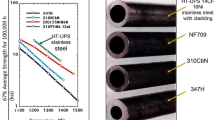Abstract
The 319-type alloy is one of the more widely used casting alloys for propulsion applications in the automotive space (i.e., E-motor housings for battery electric vehicles (BEV) and engine blocks for internal combustion engines (ICE)). For these 319-type applications that require the highest material properties and dimensional stability, a T7 (solution and quench followed by an artificial over-age) is used. The authors will demonstrate an innovative approach to investigate if the solution treatment stage can be scaled back significantly with adjustments in artificial age parameters, while achieving the same material properties and dimensional stability had a full solution treatment been used. The impact of achieving the objective of reducing the solution treatment stage would be the lower energy cost, eliminating or reducing the bottleneck (and/or increase capacity without capital investment) of the solution furnace, and finally reduce the CO2 footprint of the overall heat treat process, all of which are critical for the future of the North American automotive casting manufacturing.






Similar content being viewed by others
References
J.E. Gruzleski, B.M. Closset, The Treatment of Liquid Aluminum-Silicon Alloys (American Foundry Society, Inc., 1990), p. 256
J.R. Davis (Ed), ASM Specialty Handbook: Aluminum & Aluminum Alloys (1996) p. 306
L. Backerud, G. Chai, J. Tamminen, Solidification Characteristics of Aluminum Alloys, vol. 2, Foundry Alloys (AFS/Skanaluminum, 1990) p. 255
C.F.R. Hernandez, J.M.H. Ramírez, R. Mackay, Al–Si Alloys, 1st edn. (Springer, Gewerbestrasse, 2017), p.237
A. Lombardi, C. Ravindran, R. MacKay, Application of the billet casting method to determine the onset of incipient melting of 319 Al alloy engine blocks. J. Mater. Eng. Perform. 24, 2179–2184 (2015)
L. Colley, M.A. Wells, R. Mackay, W. Kasprzak, Dissolution of second phase particles in 319-type aluminum alloy, in Submitted to the ASM Heat Treating Society 2011 Conference.
R. Mackay, J. Sokolowski, Experimental observations of dendrite coarsening & Al–Si eutectic growth in progressively quenched structures of Al-Si-Cu casting alloys. Int. Metal. 2, 57–79 (2008). https://doi.org/10.1007/BF03355428
A. Lombardi, F. D’Elia, C. Ravindran, B.S. Murty, R. MacKay, Analysis of the secondary phases in the microstructure of 319 type Al alloy engine blocks using electron microscopy and nanoindentation. Trans. Indian Inst. Met. 64, 7–11 (2011)
K. Gall, N. Yang, M. Horstemeyer, D.L. McDowell, J. Fan, The debonding of Si particles during the fatigue of a cast Al-Si alloy. Metall. Mater. Trans. A 30A, 3079–3088 (1999)
M.H. Mulazimoglu, N. Tenekedjiev, B.M. Closset, J.E. Gruzleski, Microstructure and Thermal Analysis of Strontium Treated Aluminum-Silicon Alloys. (American Foundry Society, Inc., 1997) p. 116
R. Mackay, A. Elsayed, G. Byczynski, Novel approach to thermal processing development for precision sand casting process (PSCP) of aluminum engine blocks. Int. J. Metal. (2021). https://doi.org/10.1007/s40962-020-00526-y
G. Byczynski, R. Mackay, The Nemak Cosworth casting process latest generation, in Shape Casting: The 10th International Symposium (The Minerals, Metals and Materials Society, 2019). https://doi.org/10.1007/978-3-030-06034-3_18
G. Byczynski, R. Mackay, The Nemak Cosworth casting process—innovation, in Shape Casting: Third International Symposium (The Minerals, Metals and Materials Society, 2009), pp. 199–206 (ISBN: 978-0-87339-734-6).
R. Mackay, G. Byczynski, Methodology to remove or scale back the solution treatment in the thermal processing of the 319-type alloy without changing material properties (23–021). AFS Trans. 131, 75–84 (2023)
Acknowledgements
This paper is based upon a presentation made at the 2023 AFS Metalcasting Congress and published in the AFS Transactions Vol. 131.14
Author information
Authors and Affiliations
Corresponding author
Additional information
Publisher's Note
Springer Nature remains neutral with regard to jurisdictional claims in published maps and institutional affiliations.
This paper is based upon a presentation made at the 2023 AFS Metalcasting Congress and published in the AFS Transactions Vol. 131.
Rights and permissions
Springer Nature or its licensor (e.g. a society or other partner) holds exclusive rights to this article under a publishing agreement with the author(s) or other rightsholder(s); author self-archiving of the accepted manuscript version of this article is solely governed by the terms of such publishing agreement and applicable law.
About this article
Cite this article
Mackay, R., Byczynski, G. Methodology to Remove or Scale Back the Solution Treatment in the Thermal Processing of the 319-Type Alloy Without Changing Material Properties. Inter Metalcast (2024). https://doi.org/10.1007/s40962-024-01326-4
Received:
Accepted:
Published:
DOI: https://doi.org/10.1007/s40962-024-01326-4




